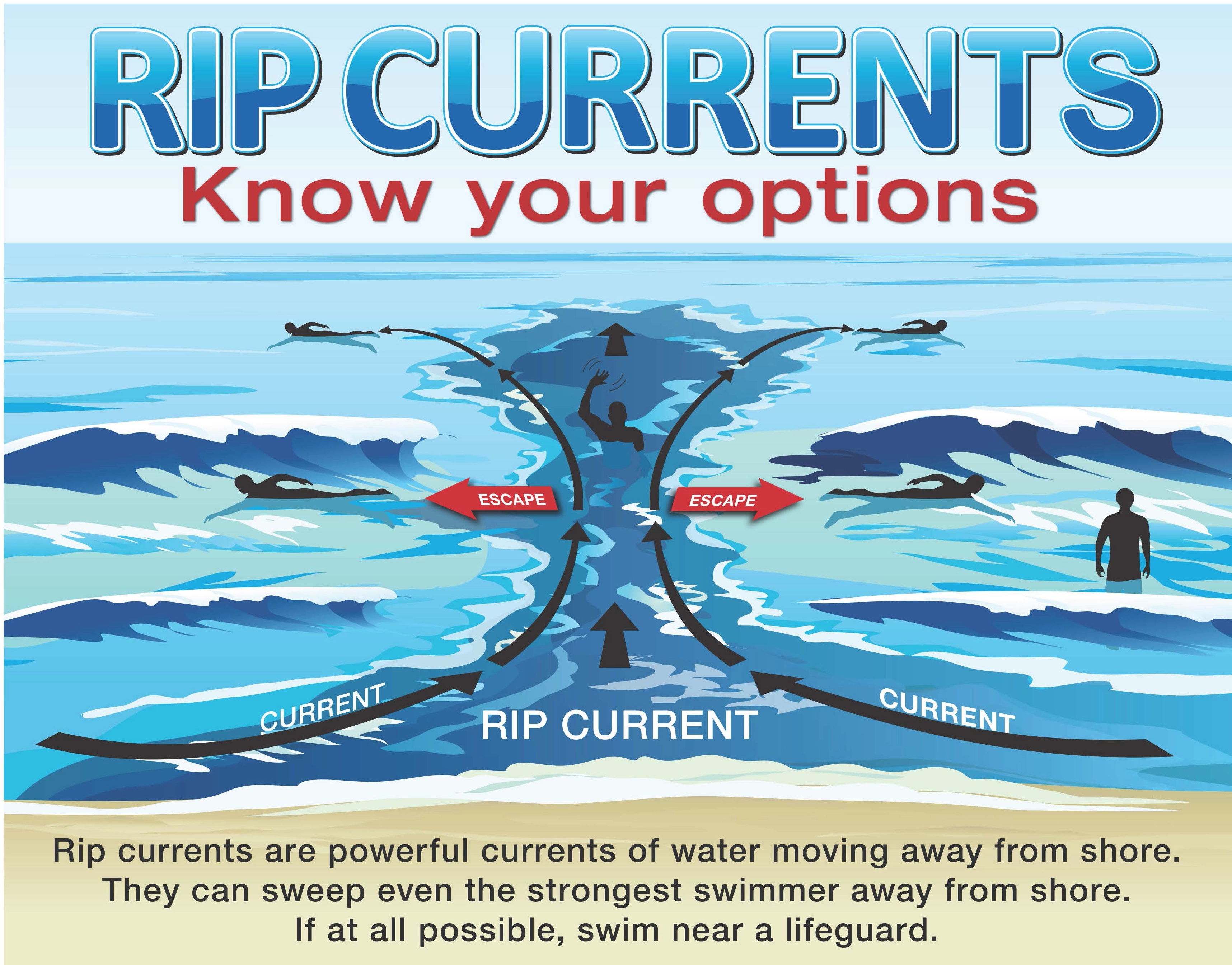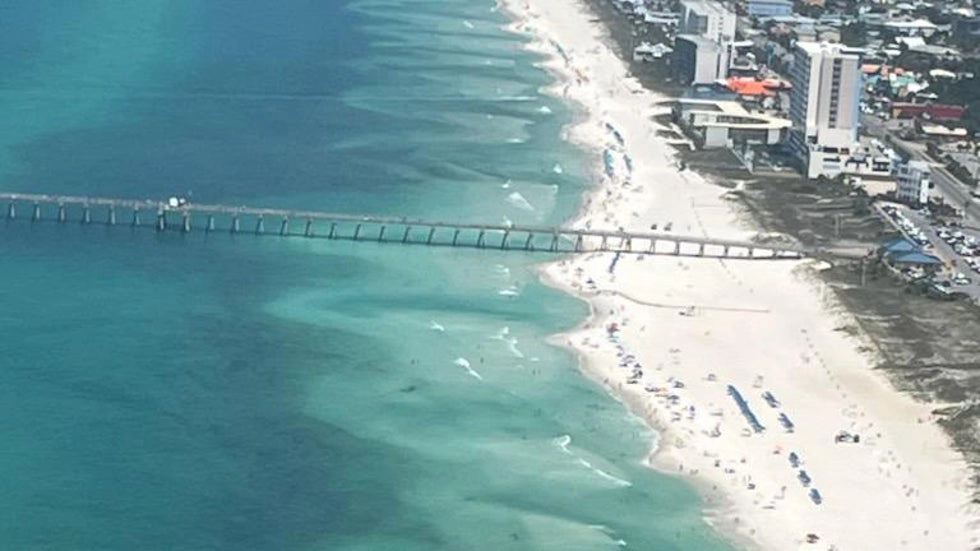The Importance of Beach Safety
Nothing beats the refreshing feeling of diving into the ocean waves when it comes to enjoying a day at the beach. However, it's essential to prioritize your safety while swimming at the beach. Understanding the potential risks and following proper safety guidelines can help ensure a fun and worry-free experience along the Emerald Coast.
Understanding the Risks of Swimming at the Beach
Swimming at the beach can be an exhilarating experience, but it's crucial to be aware of the potential risks that come with it. One of the main hazards is rip currents. These powerful currents can pull even the strongest swimmers away from the shore, making it difficult to swim back. Knowing how to recognize and escape a rip current is important, which we will discuss later in this guide.
Another risk to consider is changing gulf conditions and weather forecasts. It's essential to stay informed about the current weather conditions and any potential storms or high tides that may affect the safety of swimming at the beach. Additionally, being mindful of your own physical limits and swimming abilities is crucial to avoid exhaustion or getting caught in a dangerous situation.
Beach Safety Tips for Swimmers
To ensure your safety while swimming at the beach, here are some essential tips to keep in mind:
Always swim in designated areas with lifeguards present. Lifeguards are trained to spot potential dangers and provide immediate assistance if needed.
Never swim alone. Always swim with a buddy or in groups. This way, you can look out for each other and quickly alert someone if help is required.
Stay within your depth. It's important to swim in areas where you can touch the bottom comfortably. Avoid venturing too far out if you're not a confident swimmer.
Respect the power of the ocean. Be cautious of waves, undertows, and currents. They can be unpredictable, so staying alert and avoiding unnecessary risks is best.
Stay hydrated. Swimming can be physically demanding, especially under the hot sun. Make sure to drink plenty of water to stay hydrated throughout your beach day.
Beach Safety Tips for Families
When visiting the beach with your family, it's crucial to prioritize the safety of everyone, especially children. Here are some essential beach safety tips for families:
Teach children about water safety. Make sure they understand the importance of swimming near a lifeguard, staying within designated areas, and not going too deep into the water without adult supervision.
Keep a close eye on children at all times. Children can easily get carried away by the excitement of the beach, so it's crucial to provide constant supervision and never leave them unattended.
Use appropriate floatation devices. If your child is not a confident swimmer, consider providing them with a life jacket or floaties to ensure their safety in the water.
Apply and reapply sunscreen. Protecting your family's skin from harmful UV rays is essential. Apply sunscreen with a high SPF and reapply it regularly, especially after swimming.

Understanding Beach Warning Flags and What They Mean
Beach warning flags are a crucial part of beach safety and are used to communicate the current ocean conditions to beachgoers. Here is a breakdown of the most common beach warning flags and what they mean:
Green Flag: This indicates that conditions are generally safe for swimming. However, it's still essential to exercise caution and follow basic safety guidelines.
Yellow Flag: A yellow flag signifies moderate surf and currents. While swimming is still allowed, it's important to be cautious and aware of potential hazards.
Red Flag: A red flag indicates high surf and strong currents, making swimming potentially dangerous. It's best to stay out of the water when a red flag is flying.
Double Red Flag: This flag is a clear signal that the beach is closed to the public due to extremely hazardous conditions. Swimming is strictly prohibited.
Purple Flag: A purple flag signifies the presence of dangerous marine life, such as jellyfish or sharks. It's crucial to exercise caution and follow instructions from lifeguards.
How to Recognize and Escape a Rip Current
Rip currents are powerful channels of water that flow away from the shore and can quickly pull swimmers away from safety. It's essential to know how to recognize and escape a rip current to ensure your safety while swimming at the beach. Here are some key steps to follow:
Stay calm and avoid fighting the current. It's natural to feel panicked if you get caught in a rip current, but it's important to stay calm and conserve your energy.
Swim parallel to the shore. Instead of trying to swim against the current, swim parallel to the shore. Rip currents are generally narrow, so swimming perpendicular to the current can help you escape it.
Once you're out of the current, swim back to the shore. You can use the waves to help propel you back towards safety. If you're unable to swim back, wave your arms and call for help.
Understanding Gulf Conditions and Weather Forecasts
Staying informed about the current gulf conditions and weather forecasts is essential for beach safety. Before heading to the beach, make sure to check the local weather forecast and any advisories or warnings issued by authorities. Here are some key factors to consider:
Check for high tide and low tide times. These can impact the safety of swimming, as high tides may bring stronger currents and deeper water closer to the shore.
Be aware of any storm warnings. Thunderstorms can create hazardous conditions, including lightning and strong winds. It's best to avoid swimming during these times.
Stay informed about water quality. Some beaches may occasionally have poor water quality due to factors like pollution or harmful algal blooms. Check for any advisories before swimming.
Beach Safety Equipment and Gear
Having the right equipment and gear can significantly enhance your beach safety. Here are some essential items to consider bringing with you:
Life jackets or floatation devices: These are especially crucial for non-swimmers or weak swimmers, providing an extra layer of safety in the water.
Sunscreen: Protecting your skin from harmful UV rays is essential. Choose a sunscreen with a high SPF and apply it generously before heading to the beach.
Beach umbrellas or tents: These provide shade and protection from the sun, helping prevent sunburn and heat exhaustion.
Water shoes: Protect your feet from sharp objects, hot sand, or marine life by wearing water shoes or sandals with sturdy soles.
First Aid and Emergency Preparedness at the Beach
Being prepared for potential emergencies is an important part of beach safety. Here are some key steps to ensure you're ready to handle any situation:
Familiarize yourself with the location of the nearest lifeguard station and any emergency contact numbers.
Carry a basic first aid kit with essentials such as band-aids, antiseptic wipes, and sunscreen.
Learn CPR and basic first aid techniques. Knowing how to perform CPR and provide first aid can make a crucial difference in an emergency situation.

Be Prepared with CPR/AED and First Aid Training
While we hope you never have to use it, being trained in CPR/AED and first aid can be a valuable skill in case of an emergency. Consider taking a certified training course to learn these lifesaving techniques. Knowing how to respond quickly and appropriately can make all the difference in a critical situation.
Beach Safety Rules and Regulations
To ensure the safety and enjoyment of everyone at the beach, it's essential to follow the rules and regulations set by local authorities. Here are some common beach safety rules to keep in mind:
Respect beach closures and warning signs. These are put in place for your safety, so it's crucial to adhere to them.
No glass containers on the beach. Broken glass can cause serious injuries, so it's important to use only plastic or non-breakable containers.
Dispose of trash properly. Keep the beach clean by using designated trash bins and avoiding littering.
Follow leash laws for pets. If you're bringing your furry friend to the beach, make sure to keep them on a leash and clean up after them.
In Conclusion: Practice Beach Safety
Swimming at the beach can be a delightful and refreshing experience, but it's essential to prioritize your safety. By understanding the potential risks, following beach safety tips, and being prepared for emergencies, you can enjoy a worry-free day along the Emerald Coast. Remember, the ocean is a powerful force, and respecting its power is key to staying safe. So, practice beach safety, be vigilant, and have a fantastic time at the beach!
Ensure a worry-free and safe experience by practicing beach safety, respecting the ocean's power, and being prepared for emergencies. If you have questions or concerns about relocating to the Emerald Coast, please contact Paradisum Group eXp by calling 850-320-8385 today!



